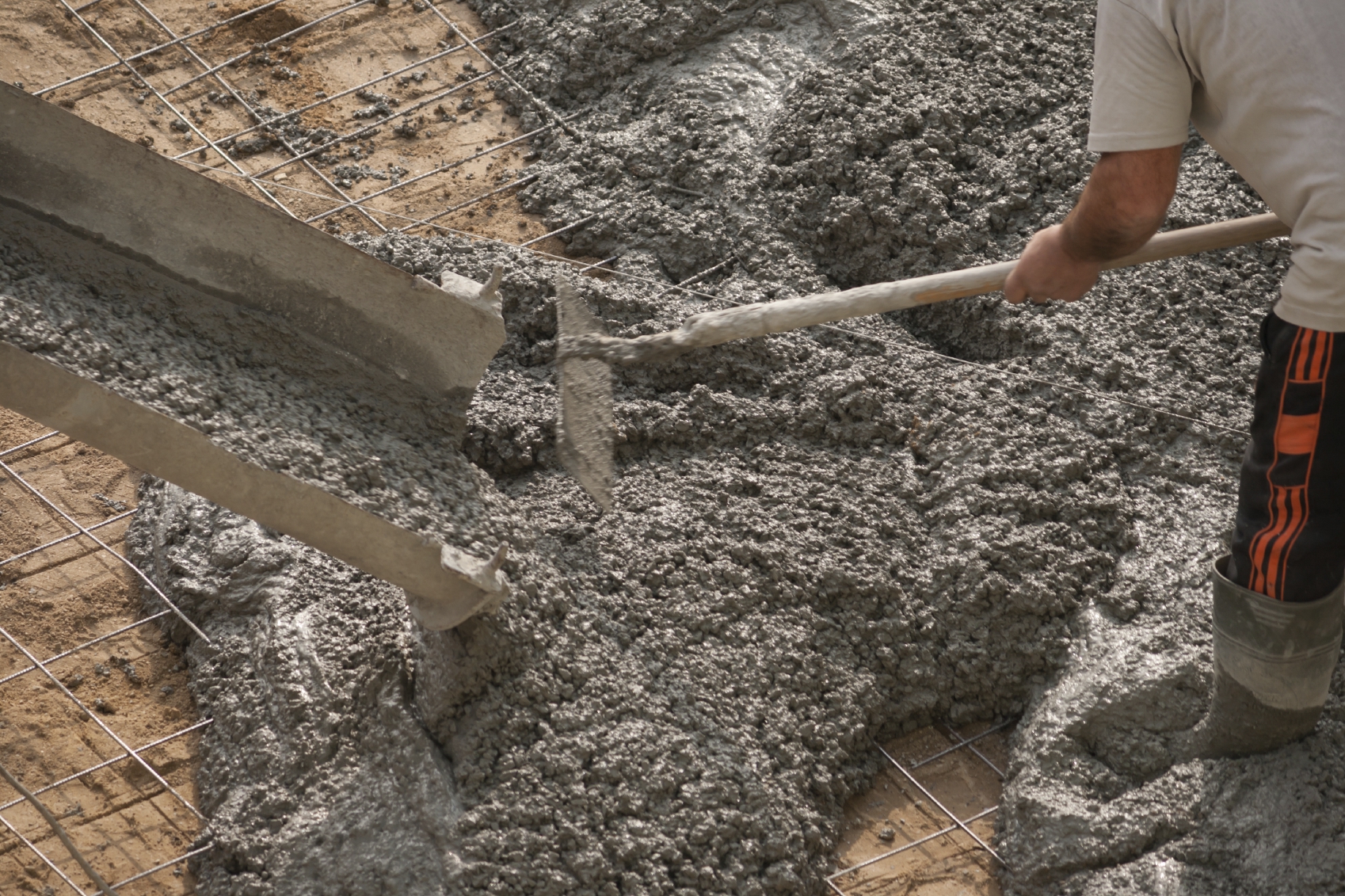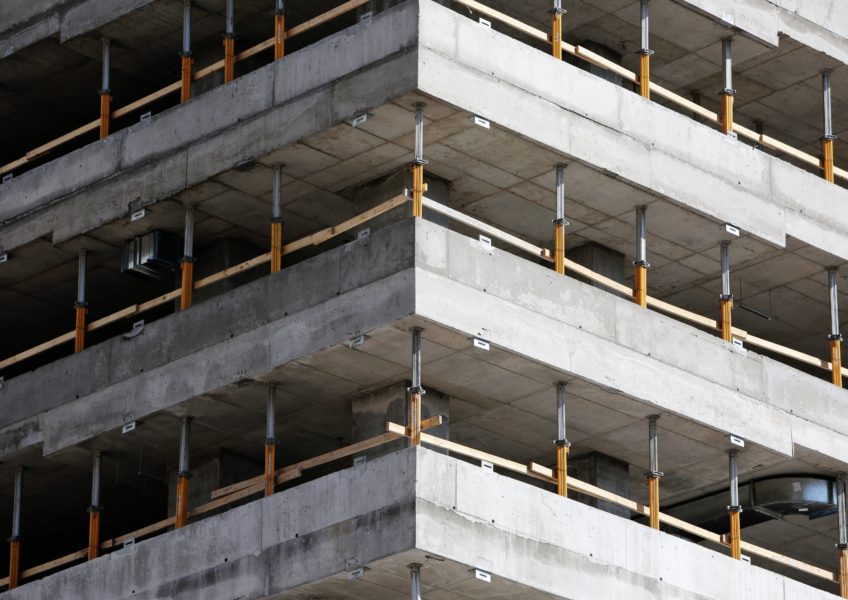Top 7 Things to Know Before Hiring Concrete Contractors Rancho Cucamonga
Top 7 Things to Know Before Hiring Concrete Contractors Rancho Cucamonga
Blog Article
The Necessary Duty of Concrete Structure in Structural Stability and Longevity
When it pertains to developing a residential property, the foundation is more critical than you could believe. Concrete structures offer unparalleled toughness and longevity, ensuring your structure can hold up against various environmental obstacles. Without a strong base, you risk prospective concerns like shifting or cracking, which can jeopardize security and worth. Recognizing the subtleties of concrete structures could be the trick to protecting your financial investment for years to find. So, what should you think about next?
Recognizing the Importance of Concrete Foundations
Concrete foundations are vital to the total security of any kind of framework, as they provide the necessary support required to hold up against numerous lots and environmental conditions. When you think concerning developing a home or an industrial room, the foundation is the very first thing you ought to consider. It acts as a barrier versus dampness, protecting your home from water damage. A well-placed concrete structure likewise prevents settling and changing, which can bring about cracks in walls and floorings. You'll intend to assure that the structure is correctly designed and strengthened, as this impacts the durability of your structure. Furthermore, a solid foundation can boost power efficiency by lowering air leakages. Bear in mind, disregarding the value of a concrete structure can cause expensive fixings down the line. Spending in a top quality structure upfront is vital for the stability and durability of your framework.
Benefits of Concrete Structures for Structural Honesty
While several aspects add to a structure's architectural integrity, concrete structures provide unrivaled toughness and toughness. You'll appreciate that concrete can hold up against extreme climate condition, resisting both dampness and temperature level variations. This resilience suggests your structure is much less likely to experience breaking or changing in time, which can jeopardize its safety.Additionally, concrete's intrinsic weight gives a solid base, avoiding movement during natural occasions like quakes or floodings. When you select a concrete structure, you're also choosing reduced maintenance; unlike timber, it won't rot or bring in pests, saving you money and time in repairs.Moreover, concrete's fire resistance uses added security, ensuring your structure can withstand high temperatures without considerable damage. In general, purchasing a concrete foundation implies you're focusing on the long-term security and integrity of your structure, making it a wise selection for any kind of building and construction task.
Usual Kinds Of Concrete Foundations
When it involves constructing foundations, understanding the usual kinds of concrete foundations can help you make informed options for your job. The most prevalent types include slab-on-grade, crawl area, and full cellar foundations.A slab-on-grade foundation is a basic, affordable choice, where a thick concrete piece is poured straight on the ground. This type functions well in cozy climates, as it minimizes heat loss.Crawl space foundations raise the home somewhat over ground, permitting for ventilation and access to pipes and electric systems. This style can aid prevent moisture issues.Full cellar foundations provide extra living or storage area while providing superb structural assistance. They need more excavation and are generally made use of in chillier climates to avoid frost heave.
Aspects to Consider When Creating a Concrete Foundation

Finest Practices for Installing Concrete Foundations
When you're installing a concrete structure, appropriate site preparation is necessary to ensure stability (West Coast General Engineering concrete foundation). You'll likewise need to comprehend support techniques to boost strength and longevity. Don't neglect the healing process, as it plays an essential function in attaining a solid foundation.
Website Prep Work Significance
Although it may appear simple, appropriate website prep work is vital for ensuring a solid and durable concrete foundation. Start by getting rid of the location of any particles, plants, or organic material that can compromise the foundation's honesty. Next off, examine the soil kind and compaction; you may need to excavate or include products to create a secure base. Level the ground to guarantee even weight distribution and stay clear of working out problems later. Setting up correct drainage systems is additionally crucial to avoid water buildup, which can deteriorate the structure in time. Mark out the foundation's measurements accurately to direct the putting procedure. By complying with these steps, you'll establish the phase for a successful concrete foundation that stands the examination of time.
Support Techniques Described
As soon as the site is appropriately prepared, the following step in ensuring a strong concrete foundation includes applying effective reinforcement methods. You must start by utilizing steel rebar, which provides tensile strength and assists stop cracking. Lay the rebar in a grid pattern, making sure it rises utilizing spacers to preserve correct coverage. Furthermore, think about making use of cord mesh for added support, especially in areas subject to heavy tons. Do not fail to remember to link the rebar intersections securely with wire. For larger foundations, fiber support can boost sturdiness, lowering the threat of shrinkage cracks. Always adhere to neighborhood structure codes and guidelines to ensure compliance. By using these support strategies, you'll greatly boost your get redirected here foundation's strength and long Visit Your URL life, laying a strong foundation for your structure.
Curing Process Essentials
To assure your concrete foundation cures properly, it is necessary to keep ample wetness and temperature conditions instantly after putting. Beginning by covering the surface with a damp cloth or plastic sheet to retain moisture. This maintains the concrete hydrated, preventing splits and making certain stamina. You ought to also monitor the temperature level; excellent treating conditions are in between 50 ° F and 90 ° F. If it's as well warm, haze the surface regularly to avoid quick dissipation. For cold climate, think about using protecting blankets to preserve warmth. Go for a treating period of at least 7 days, as this is important for optimum stamina growth. By complying with these best methods, you'll boost your foundation's resilience and durability, making certain structural honesty for many years ahead.
Maintenance of Concrete Structures for Long Life
To keep your concrete structure solid and long lasting, routine examinations are vital. You need to also ensure reliable drainage options remain in place to stop water damages. If you detect any type of cracks, addressing them promptly will save you from bigger issues down the line.

Normal Evaluations and Evaluations
While routine examinations and assessments could feel like a duty, they're important for preserving the stability of your concrete foundation. By routinely examining for cracks, shifts, or indicators of wear, you can catch possible problems before they rise into pricey repair services. Search for any kind of water merging around the foundation or unusual settling, as these can signal underlying issues. It's also smart to keep an eye on any adjustments in your home's framework, like doors that stick or windows that do not open efficiently. Keeping a document of your inspections aids track changes with time, allowing for aggressive maintenance. Inevitably, these analyses guarantee your foundation stays secure, supporting the durability and safety of your entire framework. Don't ignore this crucial element of homeownership!
Reliable Water Drainage Solutions
Regular examinations can reveal problems like water drainage problems that might jeopardize your concrete structure's stability. To avoid water buildup, guarantee your rain gutters and downspouts straight water far from the foundation. Installing French drains can successfully reroute surface area and groundwater, decreasing pressure on your structure wall surfaces. In addition, rating the soil around your home assists assure that water like this streams away, rather than pooling near your foundation.Consider utilizing sump pumps in areas prone to flooding, as they proactively get rid of excess water. Consistently examine for obstructions in drainage systems and clear them immediately. You'll protect your foundation's stability and durability by taking these positive procedures. Keep in mind, efficient drainage options are crucial for keeping a solid, sturdy concrete structure.
Motivate Split Services
When you see cracks in your concrete foundation, addressing them promptly is important for maintaining its longevity. Tiny splits can promptly progress right into larger issues, jeopardizing the architectural integrity of your home. Frequently check your foundation for signs of damages, such as straight or vertical cracks. If you spot any kind of, don't wait-- repair them instantly. You can use epoxy shots or concrete patching substances, which are effective for sealing splits. Constantly comply with the manufacturer's guidelines and take into consideration seeking advice from an expert for significant damages. Keep in mind, timely fixings not only enhance your structure's sturdiness but additionally save you cash over time by protecting against a lot more extensive fixings down the line. Remain aggressive, and your structure will stay strong and safe.
Addressing Usual Issues With Concrete Foundations
Concrete structures can face various concerns in time, making it critical to determine and resolve them without delay. Among one of the most typical problems is breaking, which can happen as a result of temperature level changes or settling soil. If you observe splits, it's necessary to assess their size and deepness; tiny cracks can commonly be secured, while larger ones may call for professional evaluation.Water intrusion is one more major issue. Excess dampness can lead to mold development and structural deterioration. Assurance correct water drainage around your foundation to minimize this threat. Furthermore, try to find indicators of changing or bowing walls, as this can suggest underlying issues with your foundation's stability.Regular assessments are basic to capture these troubles early. If you detect any worrying indications, do not think twice to consult a structure professional. By staying positive, you can maintain the integrity and long life of your concrete structure, assuring your home continues to be safe and secure.
Frequently Asked Questions
How Does Soil Type Influence Concrete Structure Efficiency?
Dirt kind considerably impacts concrete foundation performance. If you've got expansive clay, as an example, it can create changing and fracturing. Sandy dirt might lead to settling. Understanding your dirt assists ensure a stable foundation.
Can Concrete Foundations Be Fixed if Harmed?
Yes, you can repair damaged concrete structures. Depending upon the extent of the damages, strategies like epoxy shot or piece jacking can restore stability. It's ideal to seek advice from a professional for efficient services.
What Is the Common Life-span of a Concrete Structure?
A concrete structure normally lasts 30 to 100 years, depending on aspects like soil problems, climate, and upkeep. You'll wish to maintain an eye on it to guarantee it continues to be healthy throughout its lifespan.
Are There Option Materials to Concrete for Foundations?
Yes, there are alternatives to concrete for structures, like steel, hardwood, or also recycled products. Each choice has one-of-a-kind advantages and drawbacks, so you must consider your task's certain requirements when picking the best material.
Just How Does Environment Influence Concrete Foundation Sturdiness?
Climate substantially influences concrete foundation resilience (West Coast General Engineering industrial concrete). Severe temperatures, moisture, and freeze-thaw cycles can deteriorate the material, causing splits and architectural problems. You should consider neighborhood climate problems when planning your structure to assure long-lasting performance
Report this page